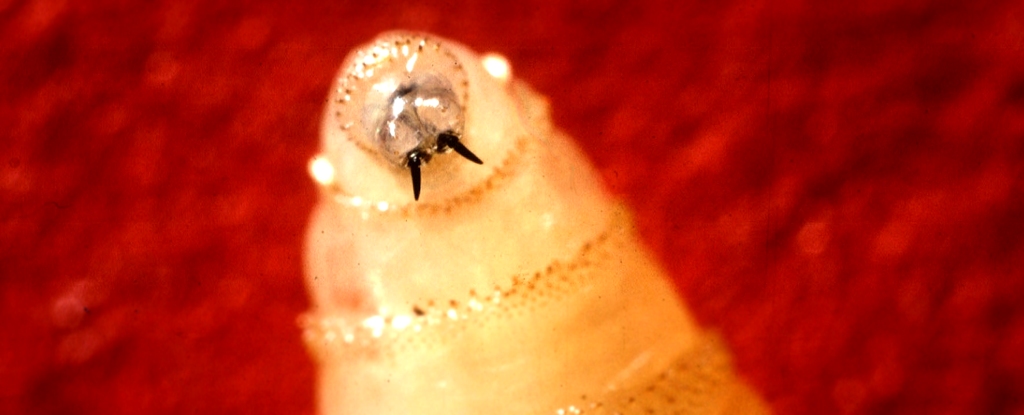A rare case of infection by a flesh-eating parasite has been reported in Maryland, marking the first occurrence in the United States in decades. The infected individual, a woman who recently traveled to Central America, was likely exposed to the New World screwworm fly (Cochliomyia hominivorax). Fortunately, the patient has recovered, and the United States Department of Health and Human Services has stated that the risk of further human transmission is “very low.”
Despite this reassurance, experts are concerned about the potential for the parasite to spread, particularly as it moves northward. The screwworm fly’s larvae are known to infect a variety of warm-blooded animals, including livestock, and their presence could have serious implications for food security in the United States.
The Nature of Screwworm Infections
Screwworms thrive by laying their eggs in open wounds or around the navel or eyes of animals. The larvae then consume the living tissue, leading to severe infections. Daniel Griffin, an infectious disease specialist, noted that the maggots can turn “living tissue into Swiss cheese.” If left untreated, these infections can be fatal.
Historically, the most frequent victims of screwworms have been cattle, horses, and pigs, but the parasite can also infect dogs, cats, and occasionally humans. Although survival is possible with prompt medical intervention, the larvae can act swiftly; they are capable of killing a mature cow in as little as a week. A potential outbreak in Texas, the largest cattle-producing state in the US, could result in economic losses of approximately $1.8 billion, according to the United States Department of Agriculture.
A Historical Context and Current Threats
The screwworm fly has a notorious history in the Americas. In the 1950s, a coordinated effort to eradicate the pests involved releasing sterilized flies to mate with wild populations, effectively reducing their numbers. The last endemic infection in the US was reported in 1982. Although the infection had been largely eliminated from the region, sporadic cases have occurred as travelers returned from affected areas.
Since early 2023, there has been a resurgence of New World screwworm infections in Central America, particularly in Nicaragua and Costa Rica, with officials reporting hundreds of cases requiring life-saving treatment. Ricardo Somarriba, director of Nicaragua’s Institute for Agricultural Protection and Health, emphasized the urgency of addressing this threat, stating, “If those worms hadn’t been removed, they would have destroyed their brain.”
The recent case in Maryland serves as a critical reminder of the need for international cooperation to control the spread of such infections. As the screwworms continue to pose a risk to human health, food security, and the livelihoods of local ranchers, vigilance and prompt action are essential to prevent further outbreaks.































































